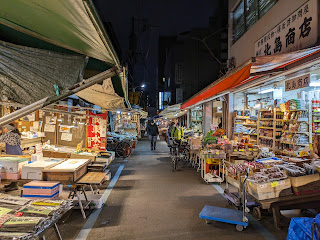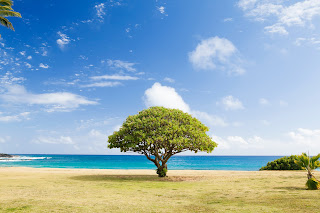I've been working in Tsukiji for 4 months now from January 2024, and it's been so much learning and inspiration.
For a foodie and cooking enthusiast like me Tsukiji has so many things to see, to eat, and to learn.
Coming as a tourist you'll find food that is both traditional and trendy, it's a must visit spot when you're looking for good food in Tokyo. Lots of options scattered in one area.
But working here is something a lot more, and I decided to share what I learned every month working here.
The real reason Tsukiji is worth going
Why is Tsukiji so famous?
There are probably 2 main reasons:
- It has the most varieties of high quality seafood from across Japan
- The technique to make it taste better is in Tokyo
Let me explain a little more about the 2 features.
1. Tsukiji is the Olympics of Seafood
Tsukiji attracts the best seafood from across Japan, and nowadays even from the world.
When fishermen catches fish, they send the best to Tokyo, (where there is money of course.)
So my father relocated to Sapporo, Hokkaido and I've been to ports in Hokkaido many times, but never have I seen the Hokkaido seafood like the ones that I see in Tsukiji.
So the best is to be sent to Tokyo. The ones that can't be sold to Tokyo will be sold locally.
Main ports to be noted in Japan are in Hokkaido, Sanriku, Choshi, Sakai Minato, and Bungo Suido.
So the best seafood from all these ports come to Tokyo, so without traveling to all these areas, you get to taste all in one spot: Tokyo.
One foodie ate wild rock oysters from Mie Prefecture, and it's not cheap. It cost him 1600JPY, but he said,
"Wow it's so good. It's amazing I don't have to go all the way to Mie to eat it. If I do, then my transport fee is more than 30,000JPY to get there."
And he went for another oyster. That's the amazing thing about Tsukiji.
2. It's not about the freshness, it's about how the umami is enhanced.
When you cook the seafood with other condiments, it might be better when it's the freshest it can be.
But when you really want to taste the richness of the seafood itself in sashimi or sushi, it's better to leave it to enhance the flavor.
This is because when the fish dies, the ATP that becomes energy to move its muscle starts to change into umami. But it gets very fishy and rot fast when the blood isn't drained which we call "shimeru."(締める)
It is also important that the fish moves as little as possible after caught as moving around uses up the ATP it has thus decreasing the amount of what will become umami.
Then it's salted for the excess water to come out of the fish, making the umami dense.
This technique and knowledge to preserve and enhance the flavors (or "age" in a sense) is concentrated in Tokyo.
The edomae sushi restaurants like Sukiyabashi Jiro or Kyubei know how to "age" the seafood to enhance its umami to the fullest. This is why it becomes a lot more expensive than supermarkets or conveyor belt sushi restaurants. They take time and knowledge for the best piece of sushi.
I'm still in the midst of learning the process but there seems to be so many complicated steps and companies involved in how the seafood is kept to be transported to Tokyo.
All these procedures make the seafood taste better.
It's fascinating to work in Tsukiji
Growing up as a Japanese in a foodie cooking family, I roughly knew what was said above, but everything is starting to dawn what is correct knowledge, after I started working at Tsukiji.
People that are craftsmen or working for food companies come in and out of the fish shop I work for. Talking to them teaches me a lot of things I wouldn't have found out for a long time if I didn't work here, at least for me it's fascinating to work in Tsukiji.
I want to keep sharing what I learned
I used to work in banking and writing, but after Covid I really started to long for what really interests me, which are things that are cooking and eating related.
I also realized that I love surrounding myself with cooking enthusiasts and foodies.
So I look forward to meeting more people that have the same passion as I do, and that we get to learn from each other.
I'll continue to update monthly what I learned through the blog.
Follow me for more contents!!
I am now in charge of the
fish shop's Instagram account as well. We post what's seasonal and best to eat from the Olympics of Seafood on that day, as well as videos on how the seafood comes and processed to sell as our dishes🐟
Follow our sous chef
Tooru 's Instagram for what he cooks at home using the seafood from the fish shop!!
He has experience from one of the top Michelin in Tokyo and I'm always amazed how fast and precise he cooks the amazing dishes.
Follow my
personal Instagram which I will start sharing more things food and seafood related.
So if you ever come to Tsukiji, stop by and say hi. The shop is busy and you might have to squeeze in during peak hours, but we love to get to know foodies like you:)








Comments
Post a Comment